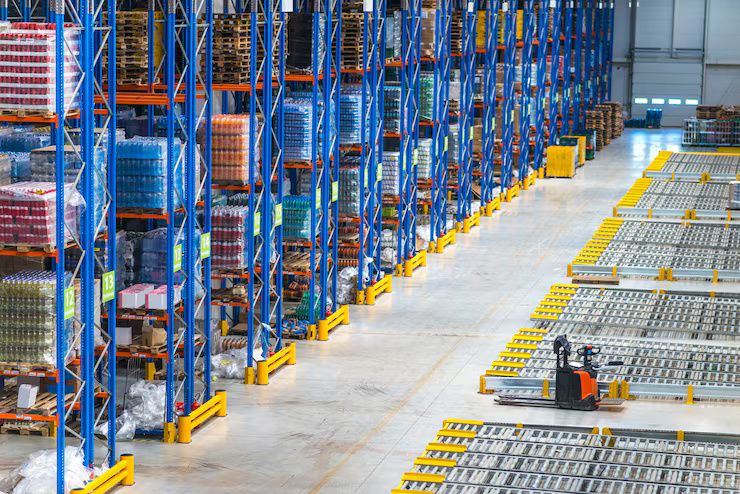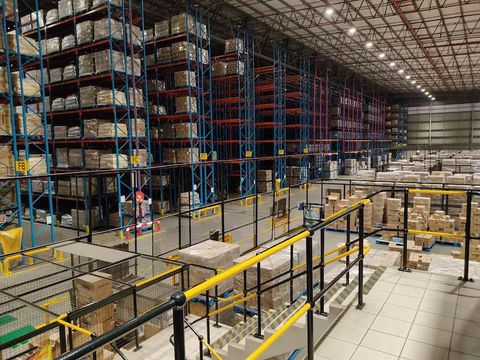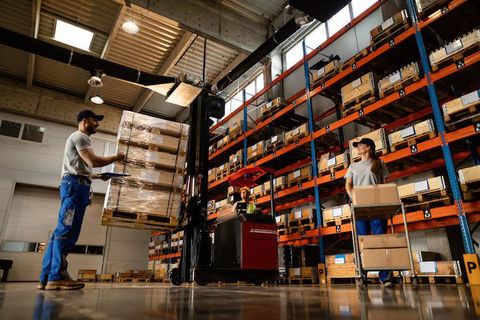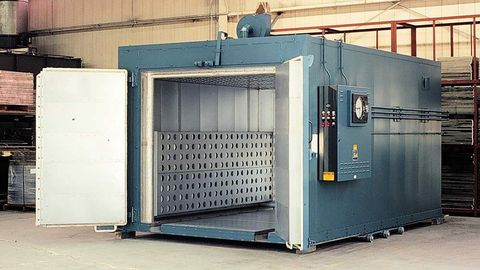Discover Smart Warehouse Racking Solutions for Better Storage
Warehouse racking systems are structured storage frameworks designed to organize goods, materials, and inventory within commercial and industrial storage facilities. They exist to solve the growing need for efficient use of space, safe inventory handling, and improved warehouse management as businesses scale.
Smart warehouse racking solutions integrate technology, automation, and modern materials to enhance how storage is designed and utilized. These systems go beyond traditional racks by incorporating features like sensors, tracking tools, automated retrieval units, and optimized load-bearing structures.

With increased demand for faster delivery, higher storage capacity, and accurate inventory management, many businesses now rely on these smart solutions to reduce errors, manage stock efficiently, and maximize available space.
Importance – Why Smart Racking Matters Today
Smart warehouse racking is important for several reasons, especially as industries adopt automation, e-commerce expands, and supply chains become more complex.
Better Space Utilization
Modern warehouses must handle large volumes of products without expanding physical space. Smart racking systems help:
-
Maximize vertical space
-
Organize inventory based on weight, size, or movement frequency
-
Reduce clutter and improve layout efficiency
This helps businesses store more items safely without expanding warehouse area.
Improved Safety
A well-designed racking system reduces risks related to:
-
Overloading
-
Poorly balanced pallets
-
Human error during material handling
Safety sensors, automated checks, and high-strength materials ensure the structure remains stable and secure.
Faster Inventory Movement
Businesses that need rapid order fulfillment—such as retailers, manufacturers, and logistics providers—benefit significantly from:
-
Easier item access
-
Clear aisle organization
-
Integration with barcode or RFID tracking
These improvements help reduce time spent searching for items and moving stock.
Cost Efficiency
Even though smart racking systems require upfront investment, they can reduce long-term operational costs by:
-
Minimizing product damage
-
Improving material flow
-
Reducing labor requirements
-
Lowering warehouse expansion costs
Who It Affects
Smart warehouse racking solutions benefit:
-
Manufacturing companies
-
E-commerce businesses
-
Retailers and wholesalers
-
Logistics and distribution centers
-
Cold storage and food warehouses
-
Automotive, chemical, and pharmaceutical sectors
Any organization handling large volumes of goods can experience better workflow and accuracy with modern racking systems.
Recent Updates – Trends and Developments (Past Year)
The past year has seen rapid growth in automation and digital transformation across warehouses. Some key updates include:
Smart Sensors Adoption (2024–2025)
Many warehouses have started adopting IoT sensors that monitor temperature, load weight, rack stability, and stock levels. These sensors send alerts when load limits are reached or structural issues arise.
Rise of AS/RS Systems
Automated Storage and Retrieval Systems (AS/RS) became more widely implemented in 2024, offering improved accuracy and reduced human involvement. These systems pair well with intelligent racking designs.
AI-Driven Layout Planning
AI tools introduced in early 2025 now help warehouse operators design optimized layouts by analyzing traffic flow, inventory movement patterns, and vertical height utilization.
Sustainable Materials
The trend toward eco-friendly warehouse operations has led to the use of recycled steel and energy-efficient lighting built into racking systems.
Government Support for Digital Warehousing
Several countries have encouraged digital supply chain adoption through subsidies and programs. For example, India’s 2024–25 logistics modernization initiatives promoted smart warehousing and automation adoption.
Laws or Policies – Regulations Affecting Warehouse Racking
Warehouse racking is subject to safety and compliance regulations to prevent accidents and ensure structural reliability. Although requirements differ by country, common rules include:
Occupational Safety Standards
Authorities such as:
-
OSHA (U.S.)
-
HSE (UK)
-
BIS Guidelines (India)
set safety standards related to load capacity labeling, rack anchoring, inspections, and workplace safety.
Fire Safety Regulations
Racking design must allow:
-
Proper sprinkler coverage
-
Adequate aisle width
-
Fireproof material use in certain industries
Building Codes
Warehouse racks may need to comply with:
-
Seismic design standards in earthquake-prone regions
-
Structural steel codes
-
Height and clearance rules
Material Handling Equipment Rules
Forklift pathways, aisle sizes, and mezzanine platforms must meet local safety regulations to avoid collisions or structural damage.
Environmental Policies
Warehouses storing chemicals, pharmaceuticals, or food must follow:
-
Hazardous material storage laws
-
Food safety compliance requirements
-
Temperature-controlled storage guidelines
Following these standards helps businesses avoid fines and workplace accidents while ensuring consistent warehouse performance.
Tools and Resources – Useful Apps, Calculators, and Services
Several digital tools and services help companies plan, monitor, and manage smart warehouse racking systems.
Warehouse Planning Tools
-
SketchUp – Useful for 3D layout planning
-
AutoCAD – Widely used for precise warehouse design
-
SmartDraw – Helps map rack placements and aisle flow
Inventory & Tracking Software
-
Zoho Inventory – Supports barcode scanning and stock management
-
Fishbowl Inventory – Automates warehouse workflows
-
Odoo Inventory – Integrates with warehouse operations and analytics
Load and Safety Calculators
-
Load capacity calculators provided by racking manufacturers
-
Pallet weight calculators available online
-
Forklift turning radius calculators for aisle planning
Automation Tools
-
AS/RS system providers
-
IoT monitoring solutions for racks and pallets
-
RFID and barcode tools for inventory movement
Training Resources
-
Online safety certification courses
-
Government-approved warehouse handling guidelines
-
Instructional manuals from rack manufacturers
These tools help businesses design better layouts, enhance operational safety, and ensure compliance with storage standards.
FAQs
1. What is a smart warehouse racking system?
A smart warehouse racking system is an advanced storage structure that uses technology such as sensors, tracking tools, and automated retrieval systems to increase efficiency, safety, and space utilization.
2. How do I choose the right racking solution?
Selection depends on factors like inventory type, weight capacity requirements, warehouse height, forklift access, and automation needs. Conducting a layout assessment helps identify the right system.
3. Are smart racking systems expensive?
Costs vary based on features such as automation, material type, and structural design. While initial investment may be higher, long-term savings come from reduced errors, better space utilization, and fewer accidents.
4. What safety standards apply to warehouse racks?
Most countries follow occupational safety and building codes related to load labeling, anchoring, seismic resistance, and fire safety. Warehouses must undergo regular inspections to ensure compliance.
5. Can smart racking improve inventory accuracy?
Yes. By integrating barcode scanning, RFID tracking, and sensors, smart racking systems reduce errors and offer real-time visibility of stock levels.
Final Thoughts
Smart warehouse racking solutions play a key role in modern storage efficiency. With rising demand for faster operations, better space utilization, and improved safety, businesses are increasingly adopting intelligent racking systems that combine structure with technology. These solutions help streamline warehouse workflows, reduce errors, and support long-term operational growth.
As automation and digital transformation continue to evolve, investing in smarter storage designs provides organizations with stronger control over their inventory and warehouse performance.






